For Conspicuous Gallantry And Intrepidity..



On 21 December 1861, the Congress of the United States authorized the Medal of Honor, sometimes referred to as the Congressional Medal of Honor, for United States Navy enlisted personnel. The Medal of Honor for other services would be created by President Lincoln in July 1862. Between December 1861 and March 1915 459 enlisted naval personnel received the Medal of Honor. Legislation in 1915 made officers of all services eligible for the award. In June 1916, a Board of Generals, comprised of five retired Army general officers, were ordered convened to review past awarding of the Medal of Honor. The Board produced its results in February 1917. A list of 911 names was proposed stricken from the Honor Roll. Those stricken included the 27th Maine, President Abraham Lincoln’s Funeral Guard, and six civilians who were removed not for failure to conduct themselves above and beyond the call of duty, they were deemed to have no call to duty as civilians. However, in the late 1970s and late 1980s many of the civilian awarded were instated including those for Buffalo Bill Cody and the only female recipient, Mary Walker.
The results of the 1917 report cleared the Honor Roll of awards that were not for valorous action, however it was in 1918 that the Medal of Honor became the highly sacred and revered award it is today. On 9 July 1918, Congress passed Title 10 of the United States Code, Subtitle C, Part II, Chapter 567, § 6241 – Medal of Honor which states:
The President may award, and present in the name of Congress, a medal of honor of appropriate design, with ribbons and appurtenances, to a person who, while a member of the naval service, distinguishes himself conspicuously by gallantry and intrepidity at the risk of his life above and beyond the call of duty—(1) while engaged in an action against an enemy of the United States;
(2) while engaged in military operations involving conflict with an opposing foreign force; or
(3) while serving with friendly foreign forces engaged in an armed conflict against an opposing armed force in which the United States is not a belligerent party.
The reason the medal is sometimes referred to as the “Congressional Medal of Honor” is because the award is presented “in the name of Congress.” Additional parts of this legislation created the Pyramid of Honor of lesser awards including the Distinguished Service, Navy and Air Force Crosses, Distinguished Service Medal, Silver Star, and so on. This legislation also prevented the furthering award of a second Medal of Honor to any recipient.
Further legislation in 1919 created a special exception for the Navy. Since the Medal’s inception the Navy had also awarded it for non-combat actions. The legislation created the Tiffany Cross, an award equal to the Medal of Honor but only awarded for non-combat actions, while the original medal was for combat-related actions.
United States Naval personnel have been awarded 746 Medals of Honor. Since the Medal’s creation 3,475 awards have been received by 3,458 Americans. That includes 19 double recipients prior to the 1918 legislation.
The only recipient who shares the same distinction of Space Marshall Tolwyn of having received their award prior to achieving flag rank was Admiral William Moffett. Moffett received his Medal of Honor for actions in the Vera Cruz Incident in 1914. While in command of USS Chester he brought his ship, without the aid of navigational charts, into a close bombardment position. His citation reads:
"For distinguished conduct in battle, engagement of Vera Cruz, 21-22 April 1914. Commander Moffett brought his ship into the inner harbor during the nights of the 21st and 22nd without the assistance of a pilot or navigational lights, and was in a position on the morning of the 22nd to use his guns at a critical time with telling effect. His skill in mooring his ship at night was especially noticeable. He placed her nearest to the enemy and did most of the firing and received most of the hits."
Moffett achieved flag rank in July 1921 when he was promoted to Rear Admiral and became the first Chief of the Bureau of Aeronautics (BuAer). He retained this title for the rest of his naval career. He was killed on 4 April 1933, when the airship USS Akron went down off the east coast during bad weather.
Jimmy Doolittle was famous even before the Doolittle Raid in April 1942 and serves as the inspiration in some part for Jason Bondarevsky’s part in End Run. On 18 April 1942, Colonel Doolittle and 79 other men, flying in 16 Mitchell B-25 medium bombers launched from the new Yorktown-class carrier, USS Hornet (CV-8), on a mission to bomb mainland Japan. One of the greatest raids, and military feats, of all time, the 16 bombers did little physical damage, but created a massive, and much needed, morale boost in the United States. On a related note, Dundradal recently met four of the five surviving Doolittle Raiders at the International Conference on World War 2. We'll save that story for next April 18...
Doolittle received the Medal of Honor for leading the raid and went on to command multiple air forces in the European Theater, and continued to fly combat missions, once as copilot for another Tokyo Raider, despite the risk of capture he faced. From the beginning of 1944 until the end of the war with Japan in September 1945, General Doolittle commanded the mighty Eighth Air Force.
The Medal of Honor in Wing Commander has some similarities with the American Medal of Honor, however it also shares more similarities with the German Knight’s Cross of the Iron Cross award system with subsequent awards becoming more intricate and ornate.
The Terran Confederation Inter-Congressional Medal of Honor, also known as the Medal of Valor, the Senatorial Medal of Honor and the "Pewt Planet," is the highest medal awarded military personnel. The Medal of Honor is given "in consideration of valorous service to humanity." A related award, the Medal of Valor with Diamonds, also exists although its purpose is not clear; the addition may designate that multiple medals have been awarded the same individual. An equivalent award, the Terran Confederation Medal of Freedom, is given to civilians. The Tri-System's Central Intelligence Service also awards a Distinguished Medal of Honour for "conduct above and beyond the call of duty." The closest equivalent Kilrathi medal is the Icon of Sivar.
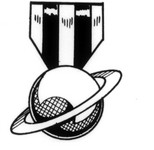

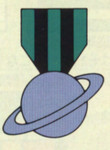


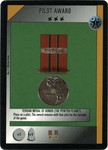

The Medal of Honor as it appeared in Claw Marks, Wing Commander, Wing Commander Super Famicom, Wing Commander Mega CD, Super Wing Commander, the CCG and Wing Commander Prophecy.
Space Marshal Geoffrey Tolwyn was reccomended for the Medal of Honor at least three times: for flying multiple sorties during the 2634 McAuliffe Ambush in spite of grave injuries, for bringing the TCS Concordia behind enemy lines to rescue TCS Tarawa following Operation Back Lash in 2667 (with Diamonds) and for leading the 2668 Earth Defense campaign. When Tolwyn's body was discovered in his cell, he was clutching the Medal of Honor awarded for his service at Earth.
Major Kevin Tolwyn was awarded the Medal of Honor for as-of-yet unspecified actions off the TCS Tarawa following the attack on Kilrah. Kevin was wearing his Medal of Honor when he visited the TCS Victory in 2669.
Commodore Jason Bondarevsky was awarded the Medal of Honor for his actions in command of the TCS Tarawa during Operation Back Lash.
Brigadier General James Merritt was recommended for the Medal of Honor for his actions in command of the First Marine Battalion at Kilrah. Both Bondarevsky and Merritt's recommendations were signed by Admiral Wayne Banbridge.
Admiral Wayne Banbridge was recommended for the Medal of Honor with Diamonds for his overall command during Operation Back Lash.
Admiral Vance Richards was awarded the Medal of Honor for as-of-yet unspecified actions. It is likely he recieved the medal for his service during the McAuliffe Ambush.
Tyra Hunter was a Terran Confederation Marine Corps pilot who received the award while serving with the 82nd Spacecraft Wing. (Hunter was once intended to be the lead character in Privateer 3, which included this backstory; it was added to the canon i Star*Soldier.)
Lieutenant Commander Ramona Chekova was awarded the Medal of Honor for giving her life during the reconnaisance mission which discovered the importance of the Kilrathi base at Vukar Tag.
Lieutenant Colonel Etienne Montclair was awarded the Medal of Honor for his actions flying off the TCS Tarawa during Operation Back Lash.
Commodore Christopher Blair was awarded the Medal of Honor at least twice. The first followed his destruction of the Kilrathi Star Post at Venice, for "leading the forces of the Confederation against the Empire of Kilrah, taking a decisive role in the Vega Sector Campaign, and commanding the squadron which accomplished the pivotal victory, in the Venice system, on or about 2654.287." The second was awarded a year later during the Firekka campaign, for "leading the forces of the Confederation against the Empire of Kilrah, taking a decisive role in defending our Firekka allies, and leading our forces to victory over the Kilrathi in the Antares sector on or about 2655.295."
Colonel Lance Casey was awarded the Medal of Honor for commanding the 2681 mission off the TCS Midway which shuttered the Nephilim wormhole gate at Kilrah.
Colonel Slade "Tex" Carver was awarded the CIS's Distinguished Medal of Honor. Privateer Grayson Burrows received the Medal of Freedom for his destruction of the Steltek drone.
As with most of the WC vs History series, this was a collaborative effort between LOAF and Dundradal. And don't think we forgot about Pearl Harbor and Action Stations as well. Dundradal was actually attending the aforementioned conference that week. Look for that in the near future!


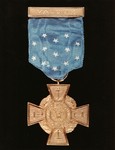
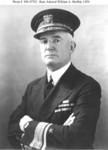
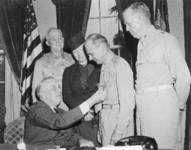
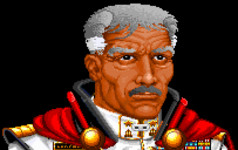
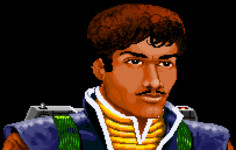
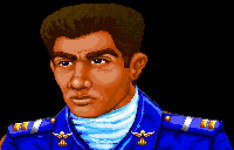
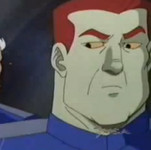
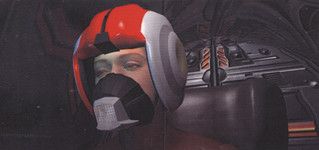
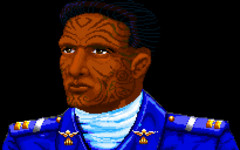
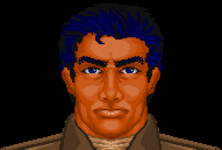

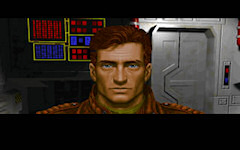

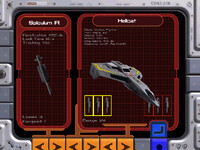


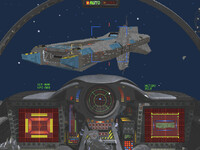
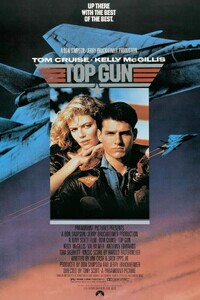
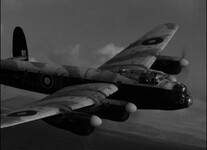
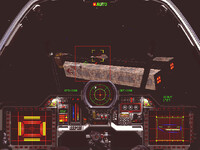


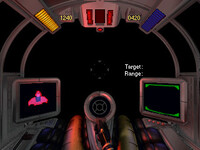

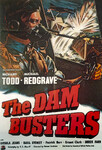
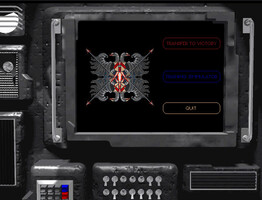
Follow or Contact Us